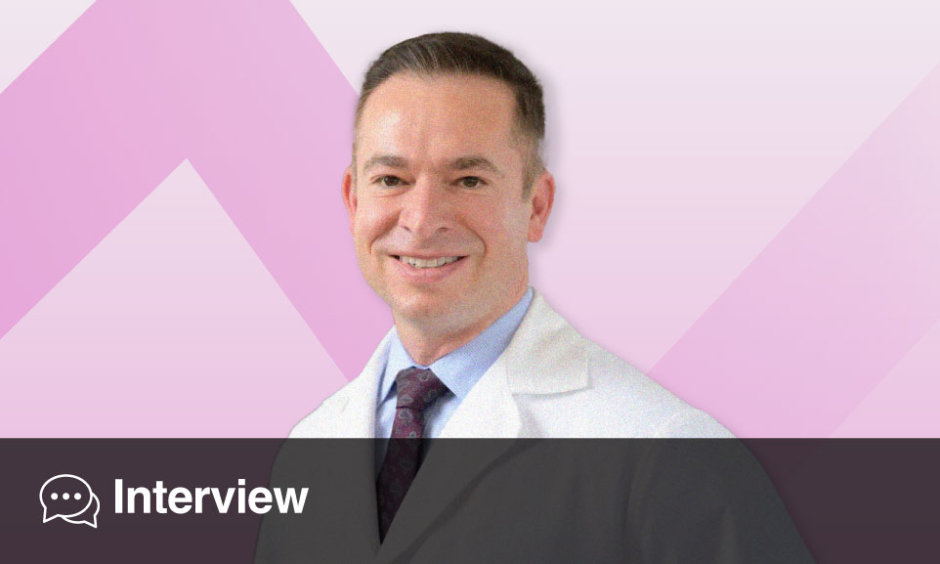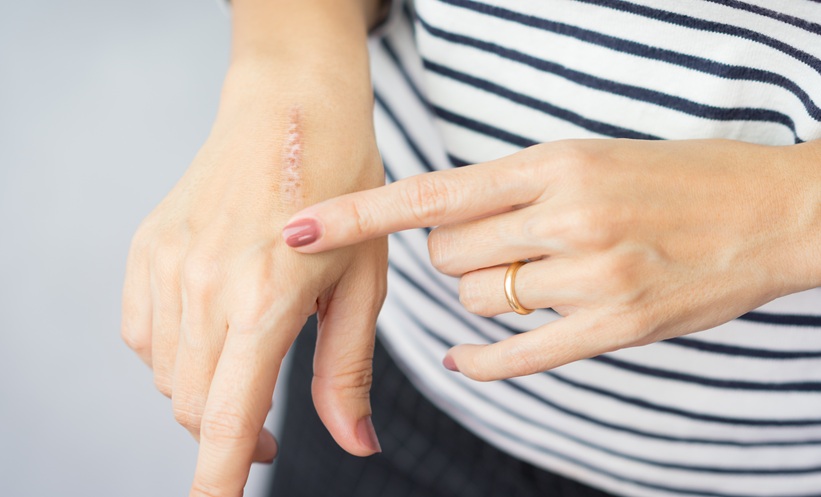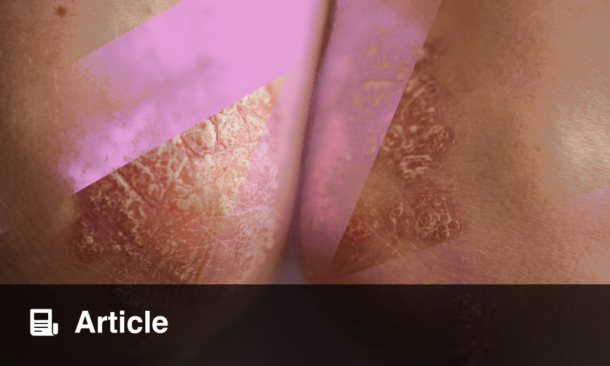AMJ is thrilled to present an interview with Keith Choate, Professor and Chair of Dermatology at Yale School of Medicine in which he discusses his pioneering work in dermatogenetics as a physician-scientist.
Part of your research focus is on rare inherited and mosaic skin disorders. What initially drew you to this area of dermatogenetics, and what continues to drive your passion for this field?
You know, it was an interesting journey. I had very early exposure to genetic skin diseases when I was an undergraduate researcher working with Paul A. Khavari at Stanford University, California, USA. I started my undergraduate research career thinking about how we could do targeted growth factor receptor dimerization to treat wounds and other skin conditions, but at the same time, some of the fundamental discoveries in human genetics were being made, and some of the viral vectors to do gene delivery were also being developed. I remember when Khavari came to me in the lab one day when I was a research assistant and said, “Why don’t we do gene therapy for genetic skin disease?”
It was also really a wonderful opportunity because, essentially, what we needed to do was identify a disease to treat. At that point, recessive loss of function mutations in the transglutaminase 1 gene, TGM1 had just been found in lamellar ichthyosis. Gary Nolan at Stanford University was working on retroviral delivery technologies, episomal ones in particular, that could produce high titer viruses that we could use to infect human cells.
Others were doing critical work in developing skin equivalents that we would be able to use as well. So, I learned how to develop reliable ways to culture keratinocytes from patient biopsies. Khavari also set me up with Mary Williams, who was running an ichthyosis clinic at the University of California San Francisco, USA. He and I would drive together up to Mary Williams’ clinic, where I would have the opportunity to meet patients who had ichthyosis, to get skin biopsies, and then drive them back to the lab, where I would culture cells.
I remember quite vividly the experience that I had there with patients who had ichthyosis. In particular, one day I was traveling, not with Khavari, but with one of our research assistants, and this very beautiful young woman came in for a visit and a biopsy. When it came time to do the biopsy, as Williams started to remove the layers and layers of foundation, revealed underneath what appeared to be flawless skin was this very deeply red and deeply fissured and scaly skin. I also noticed that the patient was becoming very unsettled by the people who were present in the room and became tearful at one point. When we left the room, my colleague turned to me and she said, “Why do such terrible things happen to good people?” Which is, of course, one of those fundamental questions that all of us ask at various points in our lives.
At that point, I was 20 years old, and I was in the midst of really coming to an understanding of who I was. Here I was in the laboratory looking at genetic disease, where we would take cells from patients who had recessive loss of function mutations, use retroviral delivery vectors to replace TGM1, and it ended up being a perfect experiment. I was doing an enzymatic transglutaminase assay that cross-linked putrescine to casein, which was a horrific assay that smelled as bad as it sounds. I remember being at the scintillation counter and looking at the results that were coming out. When we looked at normal keratinocytes, we got a value of, say, 5,000, and when we looked at patient keratinocytes, we got a value of zero. But when I looked at each of the corrected patient cell cultures where we had done the retroviral transduction, we went right back to 5,000 precisely, every time. It turned out that there were reasons that we couldn’t overcorrect these cells that have to do with the way that TGM1 is translationally regulated.
It was at that moment that I saw that we were actually going to be able to do gene therapy for lamellar ichthyosis. We would take those corrected keratinocytes and ultimately put them onto a side of a cellular cadaveric dermis, which is a technique that I learned from Dan Medalie from Shriners Burns Hospital, Galveston, Texas, USA, and do the first ex vivo gene therapy for a skin disease. To be 20 years old and to be able to see the fact that we could do real and meaningful things in the laboratory that are relevant to patients’ lives and help to address that question of bad things happening to good people. It was this incredibly motivating and awe-inspiring experience.
We talk about how we have these epiphanies that happen in our lives, and I would say that altogether, that experience really was an epiphany and was the beginning of what would be a career in rare disease.
So, I pursued the dermatology physician–scientist training program at Yale, and at this point went back to the laboratory with a focus in rare disease, recognizing that while we had begun the process of discovering genes that were relevant to rare disease and dermatology, there was just so much more that was yet not understood. Now here I am, 20 years later, looking at this and realizing that we’ve made a lot of progress, but there’s still even more to do.
In medicine, we are motivated by a lot of things, and one that has always been important for me is the idea that, in medicine and science, we have the opportunity to be of service. We have the opportunity to actually make a difference in patients’ lives, and sometimes in many patients’ lives.
As your laboratory has identified the genetic basis of over a dozen disorders, could you share a discovery that was particularly surprising or impactful in advancing our understanding of skin biology?
Our group has been lucky to have had the opportunity to systematically unlock many genetic causes of both mosaic diseases, which are, at their heart, epidermal differentiation disorders. There are many stories that I could tell, but I think probably one of the ones that is most significant to me is the discovery that we made in the treatment of porokeratosis. Porokeratosis has many different clinical manifestations. It can appear as a linear stripe, and when these linear stripes appear, they can have multiple different configurations. They can be intensely inflammatory, and in those states, they’re often called inflammatory linear verrucous epidermal naevus. They can be atrophic or hypertrophic, or localized to specific parts of the body. In general, they are fairly disfiguring. So, we set out to understand the genetic basis of linear porokeratosis and found that it was a disorder that featured second hit somatic mosaicism; that is, all of these individuals had one inactivating mutation that was present in their germline, and during development, they acquired a second mutation that inactivated the same gene. All of these patients had mutations in genes that fell within the mevalonate kinase pathway.
The mevalonate kinase pathway makes farnesyl pyrophosphate, a critical metabolite used in a variety of different reactions, as well as cholesterol. Amy Paller, Feinberg School of Medicine, Chicago, Illinois, and Peter Elias, University of California San Francisco, previously had shown in CHILD syndrome, which also features a defect in cholesterol biosynthesis, that if you were to perform upstream blockade of the pathway using an HMG-CoA reductase inhibitor, also known as a “statin”, and supply the end product, cholesterol, that you could improve CHILD syndrome.
We immediately realized that the same would be true for these protean manifestations of porokeratosis. So, we initiated a trial in patients who had these severe forms of linear porokeratosis, and we took these patients with inflammatory linear verrucous epidermal naevus who have this terribly, terribly inflammatory disease, and found that within 12 weeks, we took them from severe disease to essentially no disease, which was very exciting for us.
Then we also realized that while these were extraordinarily rare manifestations of disease, there’s a huge cohort of patients that have another distinct disorder called disseminated, superficial actinic porokeratosis (DSAP). Others would show that DSAP results from second hit somatic mosaicism in exactly the same genes we found in linear porokeratosis but is primarily due to UV-induced changes that show up all over the body. These patients have progressive development of dozens to hundreds to thousands of scaly lesions on their extremities, which also increase their risk of progression to squamous cell carcinoma.
We also showed that if we treated these patients who had DSAP with cholesterol-lovastatin ointment, we could also completely reverse their disease. This was particularly exciting for me as a practicing dermatologist because we had been using disfiguring, ineffective treatments for these patients, such as anti-metabolites or carbon dioxide laser. The fact of the matter was, every time we would use one of these destructive therapies, the disease would just come roaring back again because we weren’t treating the fundamental genetic defect, and so this was really the first pathogenesis-based therapy for DSAP.
Patients, even though they now don’t need to do this, come from around the world to my clinic because they want to meet the scientific team that made the discovery that led to an effective therapy for them. So, I think that it’s particularly rewarding when you can make a genetic discovery connected to what’s known in the literature and then actually move it into having a therapeutic that changes patients’ lives.
Your work on revertant mosaicism in ichthyosis with confetti has provided fascinating insights into spontaneous self-correction of genetic mutations. How might these findings inform future therapeutic strategies for genetic skin disorders?
I think that disorders that feature revertant mosaicism, which are relatively few, present a really interesting opportunity. One is cell-based therapy. If a patient has reverted mosaicism, it by definition means that the corrected clones have greater fitness than the surrounding affected skin. We’ve seen that in epidermolysis bullosa (EB), for example, it’s possible to use reverent cell therapy to treat disease.
It also turns out that this intercellular competition that we see in revert mosaicism is one of the reasons that EB is one of the first disorders for which we’re seeing effective gene therapy. The moment that you put a correct cell into the field of affected skin, it has a selective advantage, and so it becomes the lion in the Serengeti and has the capacity to expand.
It raises a really important question though; in the great majority of genetic diseases, we don’t see revertant mosaicism. So, if reversion is happening, the clones that arise are not lions. They are just a gazelle in a field of gazelles, and they’re just existing in this herd, and there’s no pressure to allow corrections to expand. So, the work that we’ve done in revertant mosaicism has helped us to understand a little bit more about how cells become lions.
To be able to achieve effective gene therapy for all of those other diseases that don’t feature revertant mosaicism, we’re going to need to be able to do two things. One is that we’re going to need to be able to develop the most effective way to deliver genetic cargo to every single cell within the epidermis. But we also are going to need to be able to give them that selective advantage that’s going to allow them to overtake the adjacent affected skin. This is an area that we have had a long-standing interest in, and I think it’s where there’s a lot of discovery left to be done.
What are the biggest challenges in identifying novel genetic causes of mosaic skin disorders, particularly in distinguishing pathogenic mutations from benign genetic variations?
One of my favorite things to do in the lab is to do something that we call ‘running the books’. We have a whole room filled with binders, and these binders have photographs of patients. We try to look at the clinical presentation of the patient and then look at the genetic data to see if we have a match. Depending on the disorder, a fraction of cases are instantly solved. You look at the epidermal nevus and you say, “Oh, there’s a RAS mutation; we know RAS mutations cause epidermal nevi, so this is solved.” But it’s looking at the unsolved cases that’s really exciting, because when you look at those unsolved cases in general, they are disorders that aren’t present in any of the textbooks. These are extraordinarily rare manifestations of disease where a physician’s clinical insight has led them to realize that it’s genetic for a variety of reasons, ranging from the age of onset to the specific pattern of disease that they’re seeing, or the more clinical or histopathologic pathology. Then it’s a question of matching, because you need to not only have a unique manifestation of disease and a good candidate gene mutation, but also need to have more than one patient who has the same disease and mutations in the same gene.
Oftentimes we find ourselves relatively stalled in terms of being able to progress to reporting a new genetic cause of disease because we have just one case. A lot of my time is spent going out to other institutions and speaking at meetings to tell our genetic stories. It’s when I talk about our discoveries that people contribute their own rare, unusual cases. Often it’s these cases that have allowed us to find a match to our singleton kindreds, proving that another patient who has this ultra rare manifestation of disease also has mutations in the same pathway.
I find myself from time to time calling patients we met 10 or 15 years ago and saying, “I bet you never thought you’d hear from me again, but we have continued working this whole time to try to find an answer for you, and we finally enrolled someone else who has the same disease as you do.” This is true for mosaic diseases. This is true for these epidermal differentiation disorders. The challenge is simply a numbers game. We need to be able to find enough patients with rare manifestations of disease and have the right genomic tools to be able to identify all kinds of variations that can contribute to disease, both coding and non-coding variations, and then ultimately have multiple individuals that have mutations in the same gene or pathway.
Our department acts like a hub for these patients, which involves a lot of communication with physicians. We have both physician-facing and patient-facing portals, and both contact us. It’s really interesting because, ultimately, we have become sort of a home for people who don’t have an answer. These are people who are searching for an answer, and sometimes they clearly have a genetic disease, and other times they don’t have a genetic disease at all, and they’re just inadequately managed. We straddle this clinical, translational world, where we need to be able to say either yes, you have a genetic disease, we’re interested, we want to help you, or no, you don’t have a genetic disease, but we’ll talk with your physician to help to point you in the direction of therapies that are going to make a difference.
That’s where it’s good to have both. As a physician and as a translational scientist, ultimately, we can do good in patients’ lives, both by helping them to get genetic answers when they have a genetic disease and sometimes developing new therapeutics. But also, for those others who are sort of wandering in the desert, we can help to point their clinicians in the direction of other ways to treat what they have.
In addition to your research, you mentor students and train physicians. What do you find most rewarding about working with the next generation of physician–scientists, and what advice do you give them about pursuing careers in dermatology and genetics?
I spend a lot of my time thinking about the next generation because my early career exposures in other people’s research environments were the nucleus of my epiphany, exposure, and excitement about what I do today. I think one of the greatest gifts that we have as physicians and scientists is to inspire a new generation of individuals to enter the field, and often for those individuals to take up completely new approaches.
I have been incredibly lucky to have had students and physician–scientist fellows in my research group who’ve brought new technologies and new approaches to the diseases that have allowed us to do completely new things. I think it’s mutually beneficial; you bring in new talent and new ideas and provide trainees with the runway that’s necessary for them to make new discoveries. I also do this as a Chair of my department and as an Associate Dean for Physician–Scientist Development at Yale.
If you look closely at the fundamental discoveries that have changed human health, physician–scientists have been at the center of the great majority. This is because they bring an understanding of disease physiology and of patient experience, and also extra motivation to actually change lives that is so critical. I am a huge believer in the importance of having people who are dually engaged both in fundamentally understanding disease from their exposures in clinical medicine and also having the tools that they need to ask big, basic, and translational questions that are ultimately relevant to pushing forward our understanding of disease.
Genetic research has led to novel therapeutic approaches for skin disorders. How do you see the role of gene-based therapies evolving in dermatology over the next decade?
I think that we have a lot more to learn still. Every time we identify a new gene, we gain insight into how the dysfunction of that gene contributes to disease and a little bit of insight into how that gene functions in normal skin development or differentiation. However, I think that we’re now coming to understand that genes exist within the context of an environment. This can be, and we’re coming to understand this more and more, the contributions of the microbiome. That is, what are the commensal microbes that are present both on our skin and in our gut, and what are the other factors that we encounter in daily life, like pollution, that impinge upon our unique genetic makeup to manifest in the diseases that we see? We have a tremendous amount more work to do to understand the commonalities that underlie the now greater than probably 70 genes that cause ichthyosis.
We are now pivoting to think about these diseases of epidermal differentiation more globally and trying to understand how mutations in individual genes activate common pathways that lead to scaling and redness. This is with the idea that perhaps our best therapies are not necessarily going to be gene therapies, but they’re going to again be pathogenesis-based therapies.
We need to be thinking globally about pathways affecting epidermal differentiation that might be relevant broadly. We’re seeing a lot of repurposing of therapeutics from the oncologic space to treat rare diseases. We also need to better understand the contributions of the microbiome to disease and think about how we might be able to therapeutically manipulate the microbiome to do meaningful things. We need to be looking at how we can achieve the replacement of things that are missing within the skin via topical approaches. These may not be gene therapies. These may be protein therapies. They may be small molecule therapies. We are keeping a very open mind, and at the same time, we’ve seen important advances in gene therapy in EB, and I think we are currently waiting for some transformational discoveries. Maybe this will come from better understanding lions and gazelles and the world of revert mosaicism, but maybe it will also come from just being much better able to deliver genetic cargo easily to stem cells within the skin. I think that remains one of the biggest barriers that we have to being able to do gene therapy broadly across both rare and common diseases that share overlapping features with some of the rare diseases that we see in clinical practice.
Ultimately, what we need is a systems biology approach that considers what’s the genome, what’s the transcriptome, what’s the microbiome, and then what’s the metabolism, and then ultimately integrates those things to identify what the appropriate targets are as we think broadly about advancing therapies for disease.
What are the biggest unanswered questions in dermatogenetics today, and what breakthroughs do you hope to see in the near future?
There are a lot of monogenic causes of disease that we have the opportunity to discover, and so we need to continue pushing forward until we understand all of the single genes that can contribute to disease. We know there are 30,000 genes in the genome, and we probably have a superficial understanding of the function of about 5,000. We’re also now discovering significant phenotypic expansion, where we thought mutations in one gene caused one disease, but in fact, mutations in one gene can cause multiple distinct diseases, one more different from the next. Functionalizing the genome is the next thing that we need to do, understanding not only how individual variants cause disease but also how gene-environment interactions and polygenic risk factors impinge upon the individual genetic mutations to manifest in disease.
I’m constantly telling students in the lab this: “You can’t be just a computational biologist. You can’t just be a person who looks for individual mutations. You have to be a classical biologist as well.” We find that we are often going back to basic, fundamental things about protein chemistry, about cell biology, about electron microscopy, about lipid biosynthesis. You really need to be full-spectrum biologists to be able to make an impact on trying to push forward our understanding of skin biology.








